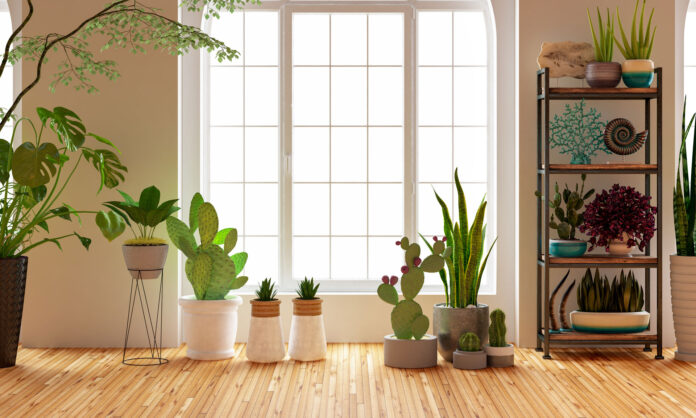Putting live plants inside the house can give you lots of benefits. They add color and outdoor-feel to your room, no matter the size. If you need a low-maintenance and more natural way to enhance the look of your indoors, nothing comes close to nursing plant babies. On top of that, they can detoxify the air too.
But are plants really effective as an air purifier? The short answer is yes. A scientific experiment conducted by NASA found out that they can clean the air to a certain extent. Of course, you cannot expect that they work as good as in-room air purifiers with HEPA filters (learn more here). However, taking in some plants inside definitely helps in improving air quality indoors.
Before you start taking just any plant from your garden into your living room, take note that some plants can filter a higher concentration of air than others. In general, plants with bigger leaves can process more carbon dioxide and turn it into oxygen – the air we breathe.
Best Air Purifier Plants for Indoors
It’s impossible to guess how many plants might be needed to clean a room. The rule of the thumb is, the more plants you have, the better (source). If you have a way to create an “organized” jungle inside your house, that can be a great idea too. If not, then at least have two plants per square feet.
Wondering what plants give off more oxygen? Here is the list of the best air purifier plants to have indoors:
1. Kimberly Queen Fern (Nephrolepis obliterate)
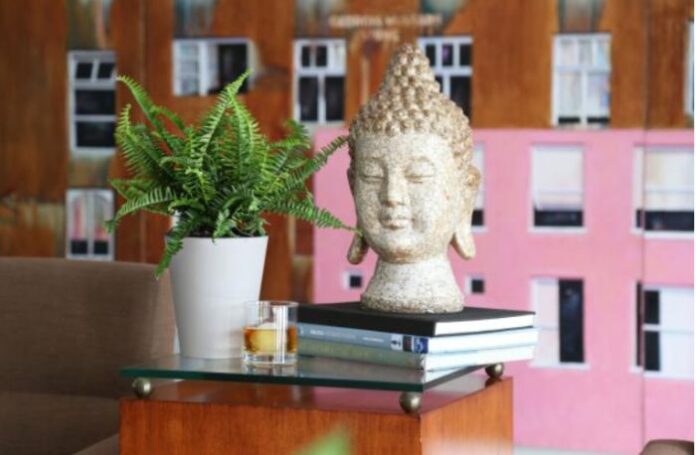
Also called sword fern because of its straight and narrow leaves, Kimberly Queen is easy to grow. This fern is mostly dark green and is an excellent addition for a tropical texture that complements the outdoor living areas as well as indoor spaces in your condo unit or apartment. It looks even better in a large pot as a lone plant but can also grow well with other tropical plants like heliconias and caladiums.
2. Devil’s Ivy (Epipremnum aureum)
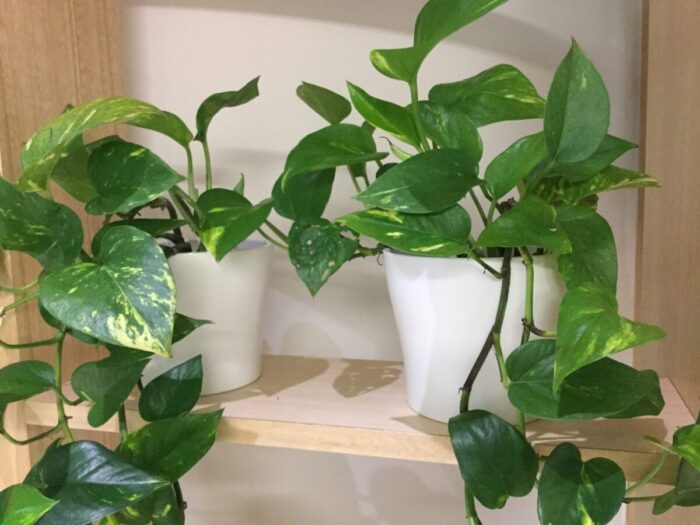
Also known as photos or golden photos, Devil’s Ivy grows easily in an indoor environment. It adds vibrancy to the room with its cascading tendrils and it grows well in water, pots, and hanging baskets. One of its beautiful features includes its heart-shaped leaves, which are also useful in fighting off common household toxins.
3. Dwarf Date Palm (Phoenix Roebelenii)
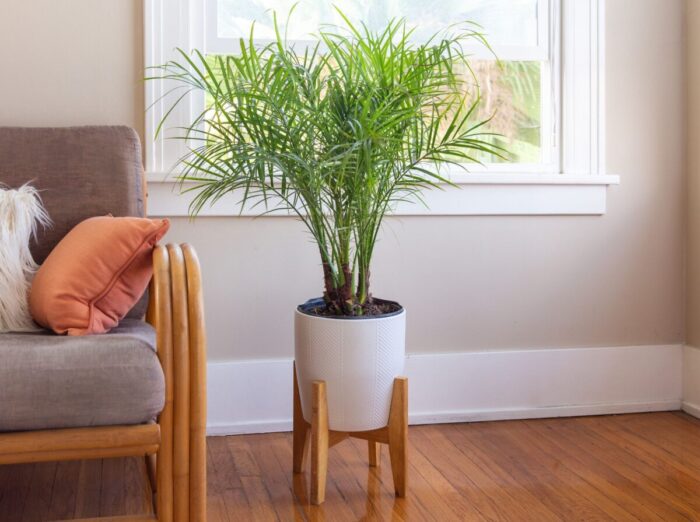
Dwarf Date Palm is one the most common tropical plants belonging to the evergreen palm tree family. The most notable features include a dense crown of fine-textured greens, gracefully arching fronds connected to a slender trunk. The trunk is colored gray-brown and has a pattern of diamond-shaped leaf bases embossed to it. It looks great as a potted plant for indoors, where it adds an elegant, tropical touch.
This dwarf palm tree has a low maintenance requirement. You only need to water it moderately and feed with fertilizer once a month. It doesn’t have any issue of pest infiltration or serious disease.
4. Peace Lily (Spathiphyllum)
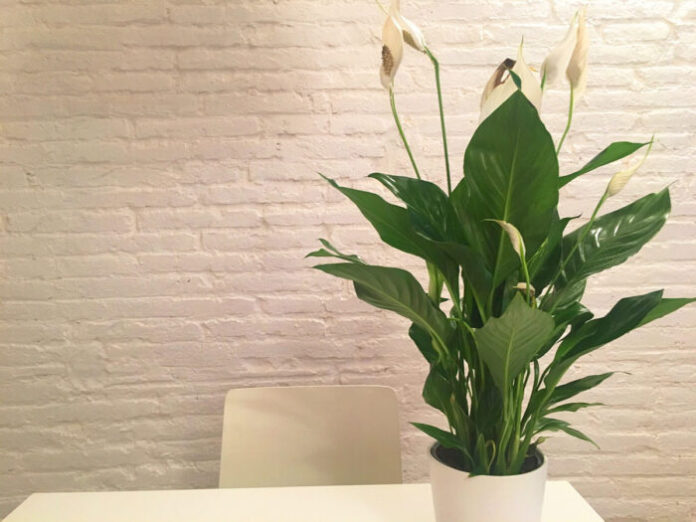
Although they are called Peace Lily, they don’t belong to the lily family but a member of the Araceae family. It is called Peace Lily because its flower looks similar to calla lily with its white, hoodlike shaped sheath that resembles a white flag.
There are different varieties of Peace Lilies, most of which can grow to almost three feet tall and display broad, big, green leaves. This tropical plant helps in cleaning the air we breathe and has a low-maintenance requirement, which makes them a popular houseplant by many.
5. Philodendron
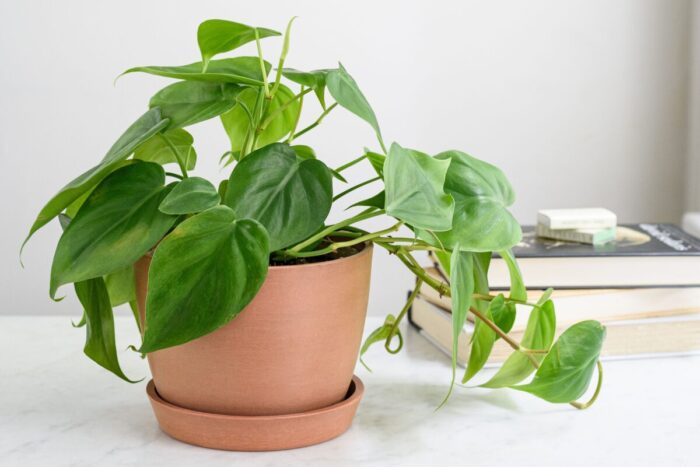
For generations, Philodendron has adorned many houses all over the world. One reason for its massive popularity is its adaptability to the conditions inside the home. Even an inexperienced plant grower will not have any difficulty propagating this plant.
6. Spider Plant (Chlorophytum comosum)
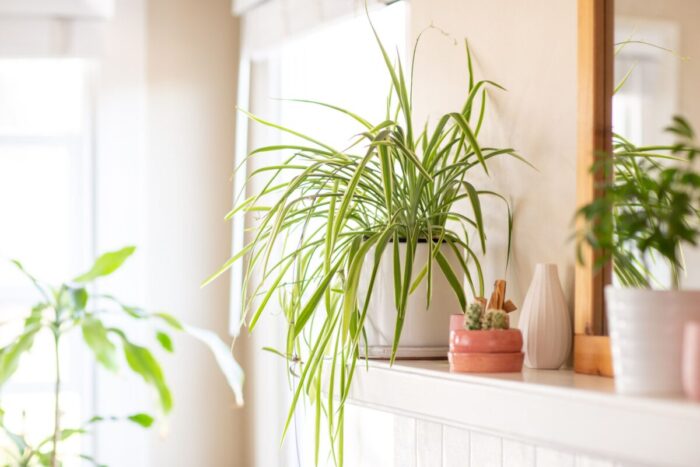
A spider plant is also one of the easiest to grow and has super cheap upkeep. This plant can adapt to almost any type of condition and doesn’t show any serious problem other than brown tips. It is called spider plants because there are spider-like plants that dangle down from the main plant resembling that of a spider’s web. When it matures, the plant produces small white flowers. Spider plants typically come in green or variegated varieties.
7. Chrysanthemums (Chrysanthemum morifolium)
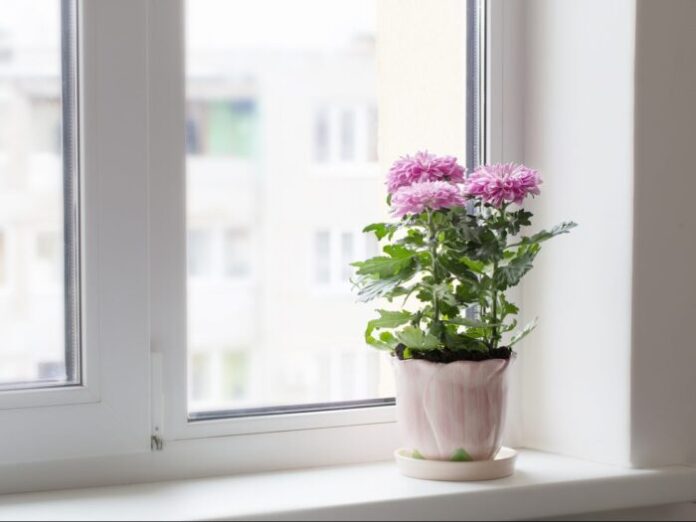
Perhaps you’ve heard of Chrysanthemums from your local flower shop as it’s one of the most commonly used varieties for a floral arrangement. But aside from looking great, Chrysanthemums are also known for their air purifier qualities.
Unlike the first six plants mentioned here, Chrysanthemums are challenging to grow and maintain, but the payoff is all worth it. They have beautiful colorful blooms that can add vibrancy to your indoor spaces.
8. Rubber plants (Ficus elastica)

Once an endemic plant species in India, rubber plants can now be found almost anywhere. Today, rubber plants are one of the most loved in-house tree plants mainly because of its big burgundy and green leaves that sparkle when exposed to the sun.
Rubber plants can grow big, so if you want to keep them small, plant them in smaller pots. This plant can last for many years – about 10 to 20 years in the home setting and 30-40 years in its natural environment. It’s also one of the easiest plants to grow and maintain. It only needs weekly watering in summer (less frequent in winter) and a spot inside your house where it can get sunshine.

